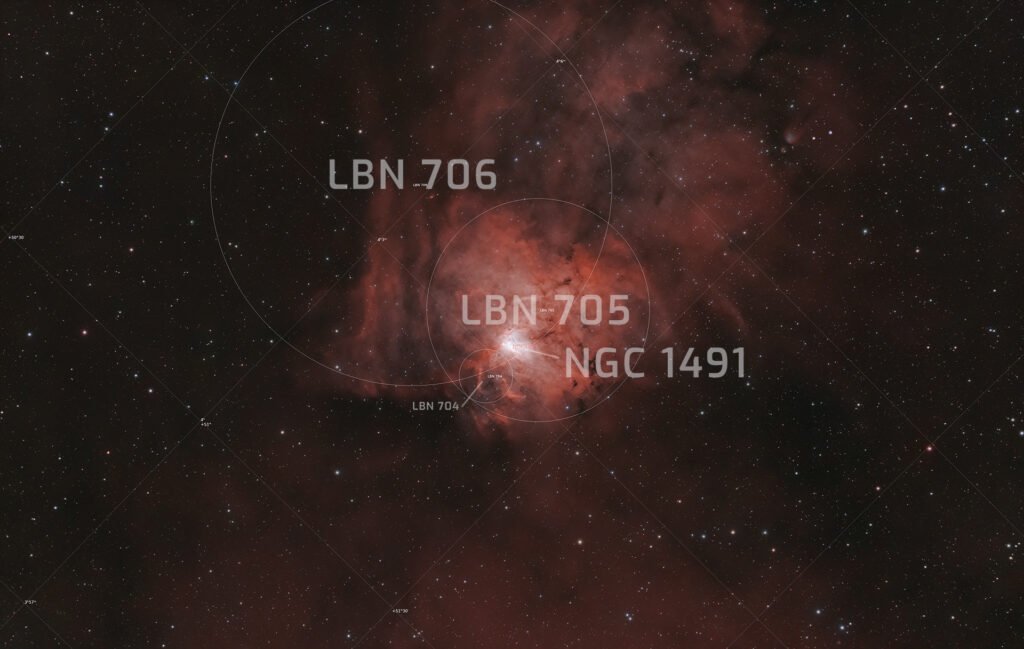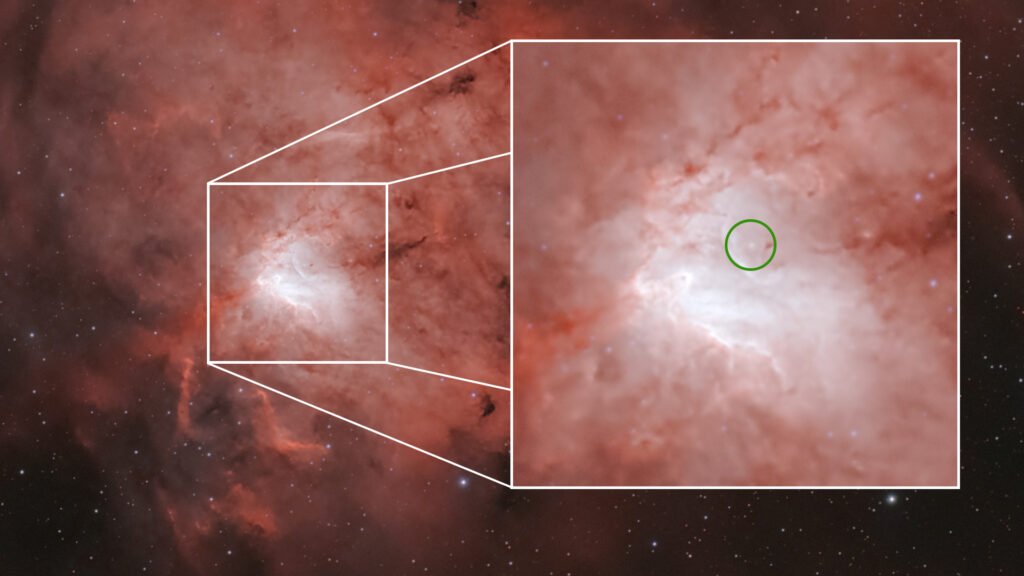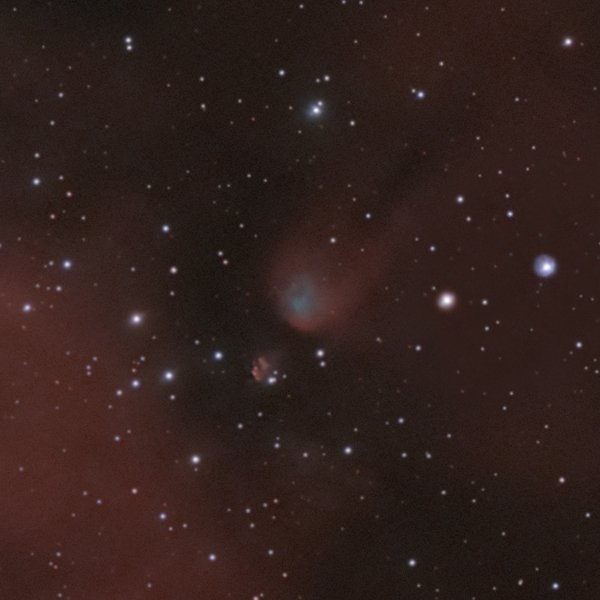In this post I want to share with you a picture of The Fossil Footprint Nebula that I captured during a course of 10 nights in November 2023. The Fossil Footprint Nebula is a non official name for the nebula, and it is also known as NGC 1491 or Sh 2-206. In addition to this object, there are also other nebulae that belong of a bigger structure. You can find them named as LBN 704, LBN 705, and LBN 706.

NGC 1491 is a H-II emission nebula that is located approximately 9,000 – 10,000 light years away from us in the constellation Perseus. The core part of this nebula is pretty bright, and it also has outer parts that mostly emit light in hydrogen making the nebula appearing pretty big in the night sky. Although the nebula has big angular size, I could not find a lot of data about this nebula on the Internet.
After doing some research about this nebula I found that there is a star called BD+50 886. It ionizes the gas in NGC 1491 creating this beautiful nebula. The star is classified as an O4V type star.


Another interesting object on the image is a potential planetary nebula named Ou 1 (PNG 151.0-00.4). It was discovered in 2009 by an astrophotographer Nicolas Outters.
Gear I used to capture this image:
Telescope: SvBony SV550 122mm Triplet APO F/5.6
Camera: ZWO ASI2600MC Pro
Mount: Sky-Watcher EQ6-R Pro
Filter: SvBony SV220 7nm 2″
Guiding Telescope: Orion 50mm Mini Guide scope
Guiding Camera: SvBony SV305
Acquisition details: 366 x 300″ (30 hours 30 minutes of total exposure time)
Processing: Astro Pixel Processor, PixInsight, and Adobe Photoshop.
You can also check out this image at its original size on my AstroBin page:


